Stimuli-Responsive Principles of Supramolecular Organizations Emerging from Self-Assembling and Self-Organizable Dendrons, Dendrimers, and Dendronized Polymers
- PMID: 37111979
- PMCID: PMC10142069
- DOI: 10.3390/polym15081832
Stimuli-Responsive Principles of Supramolecular Organizations Emerging from Self-Assembling and Self-Organizable Dendrons, Dendrimers, and Dendronized Polymers
Abstract
All activities of our daily life, of the nature surrounding us and of the entire society and its complex economic and political systems are affected by stimuli. Therefore, understanding stimuli-responsive principles in nature, biology, society, and in complex synthetic systems is fundamental to natural and life sciences. This invited Perspective attempts to organize, to the best of our knowledge, for the first time the stimuli-responsive principles of supramolecular organizations emerging from self-assembling and self-organizable dendrons, dendrimers, and dendronized polymers. Definitions of stimulus and stimuli from different fields of science are first discussed. Subsequently, we decided that supramolecular organizations of self-assembling and self-organizable dendrons, dendrimers, and dendronized polymers may fit best in the definition of stimuli from biology. After a brief historical introduction to the discovery and development of conventional and self-assembling and self-organizable dendrons, dendrimers, and dendronized polymers, a classification of stimuli-responsible principles as internal- and external-stimuli was made. Due to the enormous amount of literature on conventional dendrons, dendrimers, and dendronized polymers as well as on their self-assembling and self-organizable systems we decided to discuss stimuli-responsive principles only with examples from our laboratory. We apologize to all contributors to dendrimers and to the readers of this Perspective for this space-limited decision. Even after this decision, restrictions to a limited number of examples were required. In spite of this, we expect that this Perspective will provide a new way of thinking about stimuli in all fields of self-organized complex soft matter.
Keywords: dendrimers; dendronized polymers; dendrons; external-stimuli; internal-stimuli; self-assembling and self-organizable; stimuli-responsive principles; supramolecular organizations.
Conflict of interest statement
The authors declare no conflict of interest.
Figures



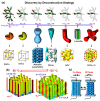



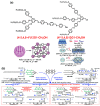
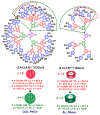
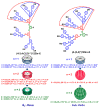


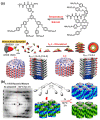

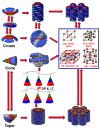











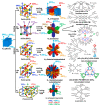


Similar articles
-
Induced helical backbone conformations of self-organizable dendronized polymers.Acc Chem Res. 2008 Dec;41(12):1641-52. doi: 10.1021/ar800086w. Acc Chem Res. 2008. PMID: 18605742
-
Self-organizable vesicular columns assembled from polymers dendronized with semifluorinated Janus dendrimers act as reverse thermal actuators.J Am Chem Soc. 2012 Mar 7;134(9):4408-20. doi: 10.1021/ja2118267. Epub 2012 Feb 22. J Am Chem Soc. 2012. PMID: 22303985
-
Molecular structure of helical supramolecular dendrimers.J Am Chem Soc. 2008 Nov 5;130(44):14840-52. doi: 10.1021/ja806524m. Epub 2008 Oct 9. J Am Chem Soc. 2008. PMID: 18841962
-
Bioinspired supramolecular liquid crystals.Philos Trans A Math Phys Eng Sci. 2006 Oct 15;364(1847):2709-19. doi: 10.1098/rsta.2006.1848. Philos Trans A Math Phys Eng Sci. 2006. PMID: 16973484 Review.
-
Highly congested liquid crystal structures: dendrimers, dendrons, dendronized and hyperbranched polymers.Chem Soc Rev. 2007 Dec;36(12):1889-901. doi: 10.1039/b611123h. Epub 2007 Jul 2. Chem Soc Rev. 2007. PMID: 17982516 Review.
Cited by
-
Dendrimers: Exploring Their Wide Structural Variety and Applications.Polymers (Basel). 2023 Nov 9;15(22):4369. doi: 10.3390/polym15224369. Polymers (Basel). 2023. PMID: 38006093 Free PMC article. Review.
-
Enzyme and pH dual responsive linear-dendritic block copolymer micelles based on a phenylalanyl-lysine motif and peripherally ketal-functionalized dendron as potential drug carriers.RSC Adv. 2023 Jul 21;13(32):22079-22087. doi: 10.1039/d3ra03790h. eCollection 2023 Jul 19. RSC Adv. 2023. PMID: 37483668 Free PMC article.
-
Innovative gene delivery systems for retinal disease therapy.Neural Regen Res. 2026 Feb 1;21(2):542-552. doi: 10.4103/NRR.NRR-D-24-00797. Epub 2024 Dec 7. Neural Regen Res. 2026. PMID: 39665817 Free PMC article.
-
Screening Libraries to Discover Molecular Design Principles for the Targeted Delivery of mRNA with One-Component Ionizable Amphiphilic Janus Dendrimers Derived from Plant Phenolic Acids.Pharmaceutics. 2023 May 23;15(6):1572. doi: 10.3390/pharmaceutics15061572. Pharmaceutics. 2023. PMID: 37376020 Free PMC article.
-
Dendrimers, Dendrons, and the Dendritic State: Reflection on the Last Decade with Expected New Roles in Pharma, Medicine, and the Life Sciences.Pharmaceutics. 2024 Nov 28;16(12):1530. doi: 10.3390/pharmaceutics16121530. Pharmaceutics. 2024. PMID: 39771509 Free PMC article. Review.
References
-
- Costello R.B. The American Heritage College Dictionary. 2nd ed. Houghton Mifflin; New York, NY, USA: 1993. p. 1335.
-
- Isaacs A., Daintith J., Martin E., editors. Oxford Concise Science Dictionary. 3rd ed. Oxford University Press; Oxford, UK: 1996.
-
- Morris C.W. Academic Press Dictionary of Science and Technology. 2nd ed. Academic Press; San Diego, CA, USA: 1992. p. 2098.
-
- Buhleier E., Wehner W., Voegtle F. “Cascade”- and “Nonskid-Chain-Like” Syntheses of Molecular Cavity Topologies. Synthesis. 1978;155:155–158. doi: 10.1055/s-1978-24702. - DOI
-
- Denkewalter R.G., Kole J., Lukasavage W.J. Macromolecular Highly Branched Homogeneous Compound Based on Lysine Units. 4 289 872. US Patent. 1981 September 15;
Grants and funding
LinkOut - more resources
Full Text Sources

